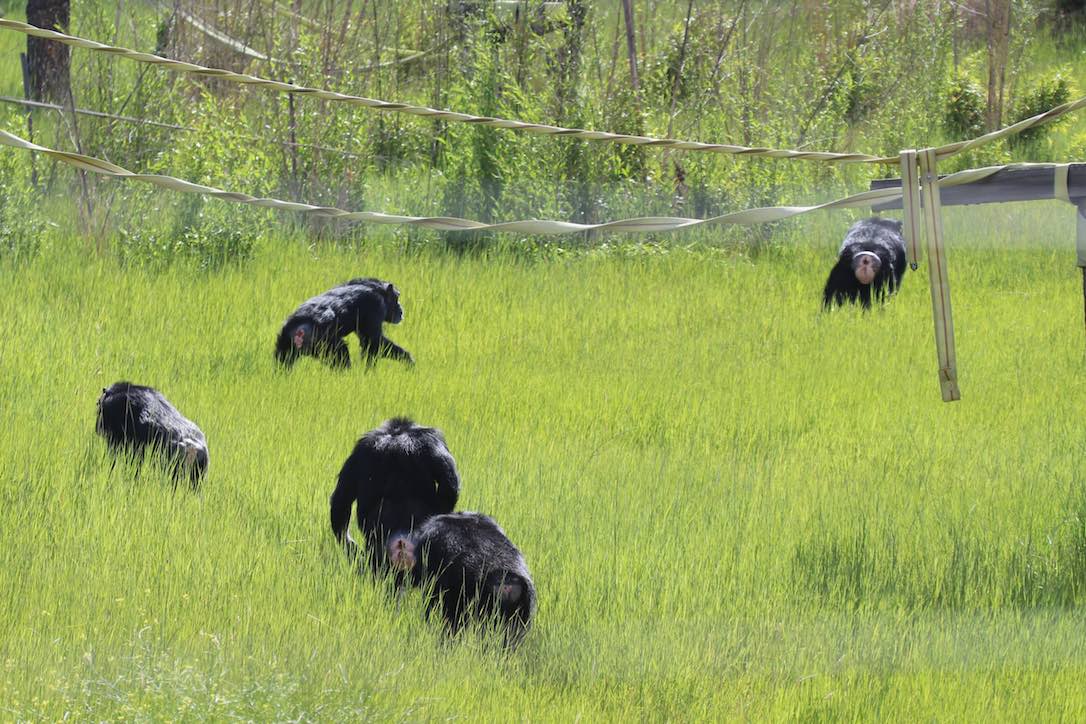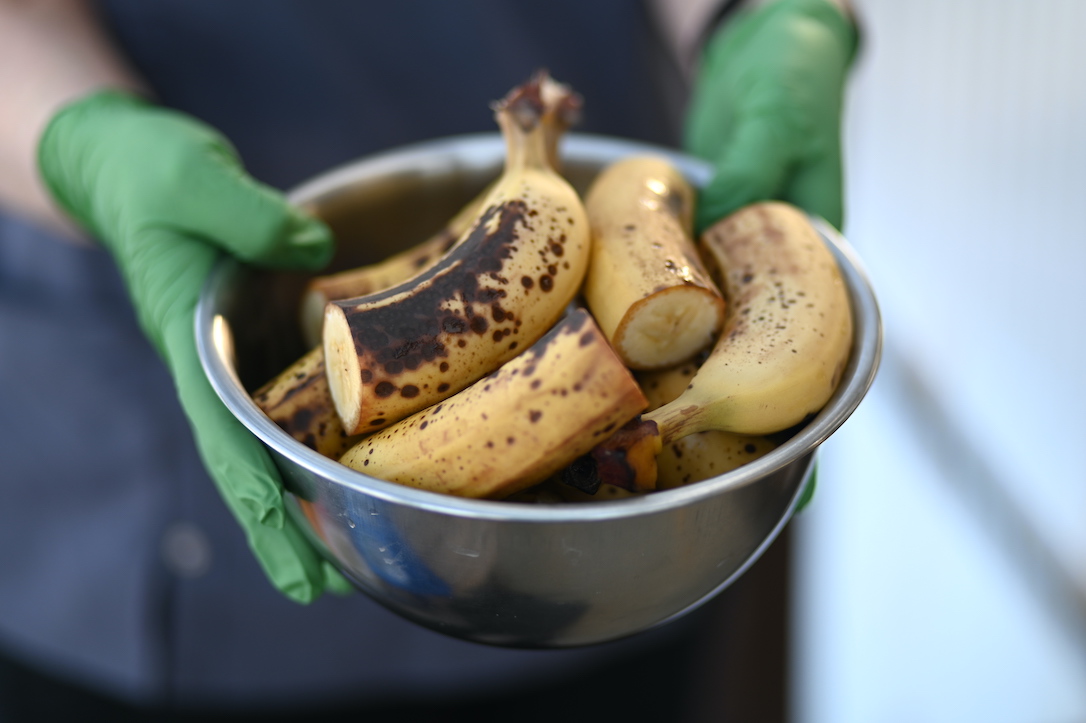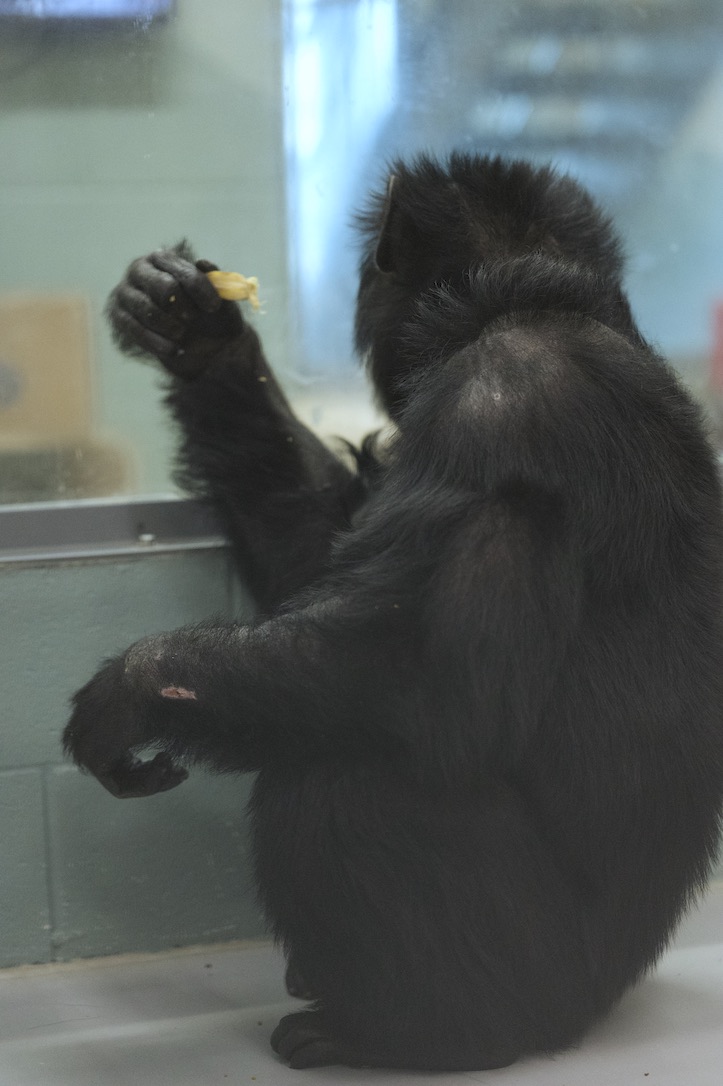I recently discussed the behavioral training program in this blog post: “Are the chimps trained?”
The post summarized our efforts to improve the chimps’ lives by promoting cooperative behaviors. However, I neglected to mention one of the simplest and most important behaviors of all: recall.
In plain terms, recall behavior is approaching another individual’s location when they call you. Those of you who care for a domestic dog may already know the importance of reliable recalls, especially if your surroundings allow them to be off leash sometimes. In fact, recalls are often the first thing that companion animals learn, either intentionally or by accident, and that’s a good thing.
The chimpanzees are not pets, but we practice this behavior with them to ensure they cooperate when we need them to vacate an enclosure.
This ability is especially important when the chimps have access to outdoor areas such as Young’s Hill and the three greenhouses. Although they are enclosed in a mesh snake fence that prohibits easy entry, snakes and other wildlife occasionally find their way inside the perimeter and end up face-to-face with gangs of screaming chimpanzees. In these situations, caregivers need the chimps to leave the snake alone so it can be safely translocated back outside. Other scenarios that would also necessitate a recall include nearby wildfire, dangerously strong winds, a sudden drop in air quality, or an unexpected problem with the electrified fences.
The chimps in Jamie’s group mobbing a snake in 2018:
Caregiver Grace relocating a non-venomous snake last summer:
A non-venomous racer that Caregiver Chad relocated away from the Chimp House:
As with the behaviors mentioned in the other post, we encourage cooperative recall through the process of operant conditioning using only positive reinforcement. To initiate a recall, one caregiver rings a loud bell and yells “recall!” This combination of sounds serves as the cue for the desired behavior: shifting from the space they’re in into the space closest to the caregiver. When everyone chooses to shift into the preferred enclosure, a second caregiver closes the doors separating the areas. Once the doors are safely closed, the first caregiver marks that as the correct behavior using the clicker and rewards each chimp with a banana.
We give whole bananas every time to ensure the chimpanzees associate the cue and its corresponding behavior with the universally-loved food item. It’s likely that some individuals will occasionally choose not to participate in recalls, in which case we’ll have to “up the ante” with a reward of even higher value.
So far, we’ve had good success getting entire groups of chimpanzees to come in from their outdoor habitats. Earlier today, we asked the chimpanzees in Cy’s group to come into the playrooms so we could rescue a garter snake that had wandered into The Riverview Greenhouse. The entire squad came back inside without objections!
Lucky keeping an eye on the elusive serpent before the recall signal:
Willy B also received banana reward; he is still recovering from his recent procedure but heard the bell and probably would have cooperated if given the chance!
Willy watching the commotion while eating his complimentary snack:
Of course, one way for a chimp to beat the system is to voluntarily stay close to the Chimp House, ready to receive a free banana for staying exactly where they already wanted to be.
Negra has perfected this art:












